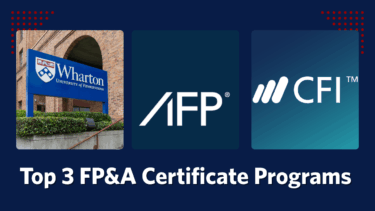- Bringing Finance and Economics to Life in the Classroom
- Key Economic Terms for the Classroom
- Free Online Resources for Teaching Economics Basics
- Interactive Games for Teaching Economics & Finance
- Classroom-Ready Economics Web Quests & Activities
- Lesson Plans and Printables for Teaching Financial Literacy
- Resources for Teaching the Stock Market
Bringing Finance and Economics to Life in the Classroom
To navigate their careers and financial futures, students need a solid grasp of economics and finance. The challenge for educators is teaching these subjects in a way that sticks. Let’s be honest, complex theories and abstract models can make students’ eyes glaze over. The key is to connect these concepts to their daily lives using engaging, real-world materials.

When economics stops being just another subject and becomes a practical tool for understanding their world, that’s when it finally clicks. But finding high-quality, reliable resources to create those ‘a-ha’ moments can feel like a full-time job.
This guide is designed to make it easier. We’ve gathered a comprehensive set of lesson plans, interactive games, essential vocabulary, and ready-to-use activities to help you bring economics, financial literacy, and the stock market to life in your classroom.
Key Economic Terms for the Classroom
Familiarizing students with the language of economics is the first step toward building confidence with financial concepts. Providing students with the necessary vocabulary can help them better understand core concepts related to financial markets, personal finance, and national economies.
Use this glossary to build a strong foundation, ensuring students are familiar with the essential vocabulary of economics, finance, and market behavior.
Aggregate Demand
The total demand for all finished goods and services produced in an economy over a specific time period
Appreciation
The increase in the value of an asset or currency over time
Barter
The direct exchange of goods or services for other goods or services without the use of money
Budget
A detailed plan that outlines anticipated income and expenses over a set period of time, acting as a crucial tool for financial management
Capital
Resources used in the production of goods and services, such as machinery, tools, and factories
Circular Flow of Income
An economic model that illustrates the continuous movement of money, goods, and services between households and businesses within an economy
Comparative Advantage
When an individual, business, or country can produce a good or service at a lower opportunity cost than someone else
Consumer Price Index (CPI)
A measure that tracks the average change over time in the prices paid by consumers for goods and services
Deflation
A decrease in the general price level of goods and services, which typically occurs when the inflation rate falls below zero percent
Demand
The quantity of a good or service that consumers are willing and able to purchase at various price levels
Depreciation
The decline in the value of an asset over time due to wear and tear, age, or obsolescence
Economic Growth
The increase in the capacity of an economy to produce goods and services over a period of time
Federal Reserve System
The central bank of the United States, responsible for carrying out national monetary policy and maintaining the stability of the financial system
Gross Domestic Product (GDP)
The total monetary value of all finished goods and services manufactured within a country’s borders in a specific period
Inflation
A sustained rise in the general price level of goods and services, meaning that the purchasing power of currency is reduced over time
Interest Rate
The cost of borrowing money or the payment earned for saving or lending money, usually expressed as a percentage of the amount
Market Economy
An economic system in which production decisions and the pricing of goods and services are guided primarily by the interactions of a country’s individual citizens and businesses
Monetary Policy
The actions a central bank, such as the Federal Reserve, takes to influence the money supply and credit conditions in order to encourage or slow down economic growth
Opportunity Cost
The value of the next best alternative that must be forgone when a choice or economic decision is made
Scarcity
A fundamental economic problem that exists because individuals and societies have unlimited wants but limited resources, necessitating choice
Free Online Resources for Teaching Economics Basics
To complement your curriculum, here is a collection of high-quality courses, videos, and guides from trusted sources to help explain core economic principles.
- Understanding Personal Finance: Khan Academy breaks down the basics of key financial concepts in this course.
- Crash Course Economics: This video course makes a potentially daunting subject much easier to understand.
- Financial Literacy for Kids: Use this collection of lesson plans to instill basic economic concepts in younger students.
- Strategies for Teaching Financial Planning: Try these activities and conversation starters to help kids learn about how to make smart spending and investing decisions.
- Money Smart for Young People: The Federal Deposit Insurance Corporation offers four free, high-quality, age-appropriate curricula that include comprehensive lesson plans for educators and activity guides for students.
- The Supply and Demand Game: An interactive simulation game and lesson plan found here can help students understand basic concepts such as supply, demand, and market equilibrium through hands-on activities.
- Why Money? Follow this lesson plan to help students gain a better understanding of the concept of money and how it evolved from the barter system.
- 10 Commandments for Frugal Living: Being financially responsible can be a challenge, but following these simple rules can make it easier.
- Understanding Credit: Having a firm grasp of how to use credit effectively and how to avoid misuse is crucial to a person’s economic stability.
Interactive Games for Teaching Economics & Finance
Engage your students with these interactive games that make learning about complex topics like budgeting, debt, and counting money both fun and memorable.
- Coin Saver Challenge: This free online game for young children teaches them to identify coins, count the total amount of money in a pile, and compare the value of two coin stacks.
- Plinky’s Piggy Bank Party: The U.S. Mint created this interactive game, which helps young students practice counting money, learn basic math concepts, and develop coin identification skills by managing a digital piggy bank.
- Money Magic: Help Enzo the magician manage his spending and save up enough money to make it to Las Vegas in this game that teaches core budgeting principles.
- Payback: Can you make it through college without taking on too much debt to handle? This simulation game challenges players to find out.
Classroom-Ready Economics Web Quests & Activities
These inquiry-based activities are designed to send students on a journey to research and apply economic concepts, from the national debt to basic consumer principles.
- Look Who’s Footing the Bill: The national debt is so large that it can be difficult to comprehend, but its impact on the economy is far-reaching. Use this Web quest to challenge students to investigate the historical, economic, and political factors contributing to the national debt and propose solutions within the framework of democracy.
- Fiscal Policy Web Quest: This high school economics resource features a structured, inquiry-based Web quest that challenges students to research and apply concepts related to government spending, taxation, and the economic impact of various policy tools.
- Third-Grade Economics Web Quest: Elementary-school students can learn more about the fundamental concepts of needs and wants, goods and services, and the roles of consumers and producers through this activity.
- What Is Economics, and Why Should I Care? Through this activity, kids can take a deep dive into economic principles and how they apply to everyday life.
Lesson Plans and Printables for Teaching Financial Literacy
This section provides ready-to-use lesson plans and printable worksheets to help students practice budgeting, compare credit options, and understand opportunity costs.
- Credit Card Comparison: Print out this worksheet to teach students about how to compare the terms of different credit options.
- My Spending Plan: This worksheet provides a helpful template for planning out a budget spreadsheet.
- Teaching Economics with Active Learning: Federal Reserve educators have compiled this collection of lesson plans to ground economics concepts in real-life situations for students.
- Teacher-Tested Financial Literacy Lessons: Try out these ideas to bring engaging lessons on financial topics into your classroom.
- Mario’s Choice: Decision-Making and Opportunity Cost: This lesson plan breaks down the concept of opportunity cost for middle school students.
Resources for Teaching the Stock Market
The stock market can be an intimidating subject. Use these articles and guides to demystify investing, mutual funds, and market basics for students and teens.
- Teaching Kids About Stocks: Investing in the stock market can be complex, but kids can and should be introduced to the basics from a young age.
- The Stock Market for Kids: This article simplifies the stock market, starting with a metaphor that compares the market to the ecosystem of a forest.
- Intro to Mutual Funds: Teens and their parents can both learn a lot about investments from this article.
- Investing in Green Bonds: Learn about how you can invest in bonds that support environmental sustainability.
- Taking Stock in Teen Trading: With a parent’s close supervision, teens can get started investing in the stock market and learn how it works firsthand.




